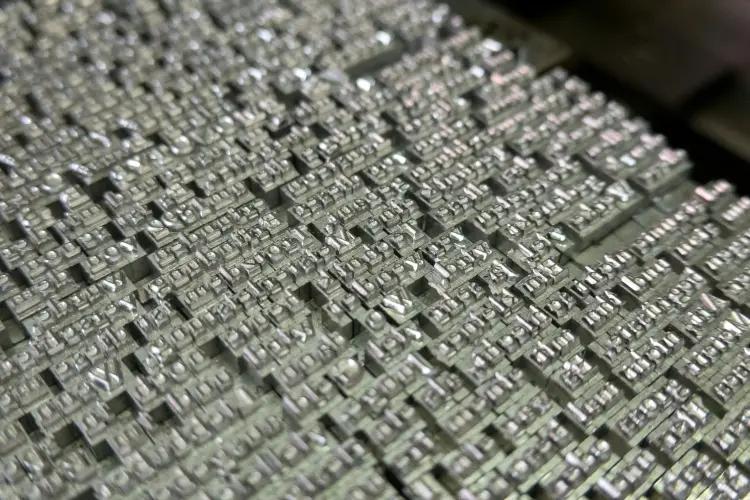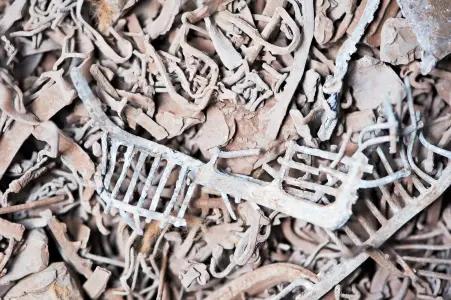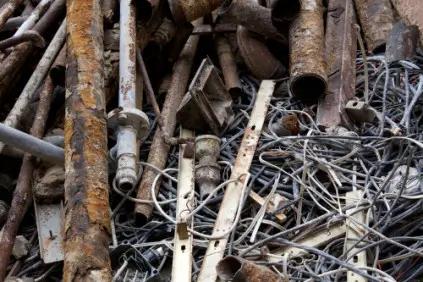From hazard to resource - the journey of lead scrap metal recycling towards a greener future
The basics about lead
Lead, a versatile and widely used metal, holds significance in various industries due to its unique properties. It is dense, malleable, and resistant to corrosion, making it ideal for applications ranging from construction materials to batteries and ammunition. Its low melting point facilitates easy casting, while its ability to absorb vibrations makes it valuable for soundproofing. However, lead's toxicity poses environmental and health risks, necessitating careful handling and disposal. Despite these challenges, lead recycling is a vital aspect of sustainable resource management, offering opportunities to reduce environmental impact, conserve natural resources, and mitigate health hazards associated with lead exposure. Understanding the basics of lead metal is crucial for ensuring its safe and efficient utilization across diverse sectors.

Which are the most common economic uses of lead?
Lead finds extensive economic use across multiple industries due to its diverse properties. One of its primary applications is in lead-acid batteries, which power vehicles, backup power systems, and numerous electronic devices. Additionally, lead's corrosion resistance makes it invaluable in construction materials such as roofing, plumbing, and radiation shielding. In the automotive sector, lead serves in wheel weights and soldering for vehicle assembly. Its soundproofing capabilities make it a preferred material for acoustic insulation in buildings and transportation infrastructure. Furthermore, lead's ability to block radiation makes it indispensable in medical imaging equipment like X-ray machines and CT scanners. These economic uses underscore lead's versatility and importance in various sectors, driving demand and highlighting its significant role in modern industries.

Where does lead scrap come from?
Automotive sector
Electronics and electrical equipment
Construction and demolition
Recycling facilities
The lead recycling journey and its challenges
The lead recycling journey encompasses a complex web of economic, environmental, and societal challenges. Lead, a highly recyclable metal, undergoes a cyclical process that involves collection, sorting, smelting, and purification to extract valuable lead content for reuse. However, this journey is fraught with obstacles. Foremost among these challenges is the widespread misconception surrounding lead recycling, often overshadowed by concerns about its toxicity. Public perception and regulatory constraints contribute to hesitancy in embracing lead recycling initiatives fully. Moreover, inadequate infrastructure for collection and processing poses logistical hurdles, particularly in regions lacking efficient waste management systems. Furthermore, the lead recycling industry faces technological barriers, particularly in developing efficient and environmentally sustainable smelting processes.
Traditional methods often entail high energy consumption and emit harmful pollutants, exacerbating environmental degradation. Implementing innovative and eco-friendly smelting techniques is imperative to mitigate these adverse impacts. Additionally, the global market dynamics and fluctuating demand for lead further complicate the recycling landscape. Economic factors influence the viability of lead recycling operations, affecting investment decisions and market competitiveness. Moreover, the informal sector's significant role in lead recycling presents both opportunities and challenges. While informal recyclers contribute to waste diversion and livelihood generation, their unregulated practices pose environmental and health risks. Formalizing and integrating informal recycling practices into structured frameworks is essential for ensuring safety, sustainability, and fair labor practices within the industry.

Types of lead scrap
Scrap lead encompasses a variety of types, each originating from different sources and possessing distinct characteristics. One common type is lead-acid batteries, prevalent in automotive, industrial, and stationary applications, which serve as a primary source of lead scrap. Industrial scrap lead includes manufacturing residues such as trimmings, offcuts, and rejected parts from processes like casting, machining, and fabrication. Construction and demolition activities yield lead scrap in the form of lead pipes, roofing materials, and lead-based paints removed from structures. Additionally, electronic scrap contains lead components from discarded devices like batteries, circuit boards, and cathode ray tubes. Other types of lead scrap include lead weights, ammunition, and miscellaneous consumer products containing lead. These diverse sources contribute to the availability of lead scrap for recycling.
Lead recycling reduces the need for environmentally damaging mining and smelting processes, conserving natural resources and minimizing energy consumption and greenhouse gas emissions.
Additionally, it prevents lead pollution by ensuring proper disposal of lead-containing products, mitigating risks to ecosystems and human health from lead contamination.


What are the top three countries that buy lead scrap?

China
China has been a significant importer of lead scrap due to its large manufacturing sector and demand for raw materials. Lead scrap is often used in the production of batteries, automotive components, and other industrial products.

South Korea
South Korea is another major importer of lead scrap, primarily for use in the production of batteries and electronic devices. The country's strong industrial base drives demand for lead scrap as a raw material.

India
India also ranks among the top importers of lead scrap, fueled by its growing automotive, construction, and manufacturing sectors. Lead scrap is utilized in battery production, infrastructure development, and various industrial applications across the country.

Buying and selling leads scrap with METYCLE
At METYCLE we buy and sell all types of lead, especially racks, radio, reels and rops (as specified and defined by ISRI (Institute of Scrap Recycling Industries). We are metal specialists who will work closely with you to either find the best lead for your requirements or to create immensely scalable business for your scrap lead. Get in touch with us today to partner up with the world's leading scrap metal marketplace! We are based in Germany, and through us you get access to hundreds of suppliers and thousands of products - all while enjoying hassle-free shipping and customs and favourable payment terms.
Read more
Recycle metals with us
Recycle metals with us
Our metals
- Aluminum: the economic impact of recycling
- Copper: uncovering the sustainable scrap cycle
- Lead: the journey of scrap metal recycling towards a greener future
- Magnesium: scrap as a renewable resource for circular economy
- Nickel: scrap recycling as a value maximizer for sustainable industry growth
- Zinc: the sustainable promise of scrap recycling
Inside METYCLE
Inside METYCLE
Engineering and Technology at Metycle
Want to stay updated via WhatsApp?
Stay ahead with METYCLE's products! Join our WhatsApp broadcast channel to receive real-time updates on available metals and unbeatable deals. Explore our current product offerings and never miss out on the best opportunities!
© 2025 METYCLE
